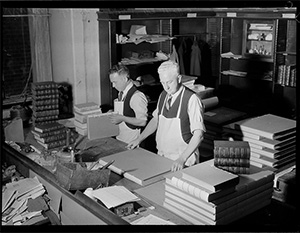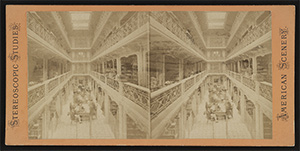 Library. Washington D.C, None. [Between 1860 and 1895] Photograph. https://www.loc.gov/item/2017657097/.
Library. Washington D.C, None. [Between 1860 and 1895] Photograph. https://www.loc.gov/item/2017657097/.
Earliest Evidence of Instruction
A librarian lecturing to undergraduates was found at Harvard College in the 1820s. Library lectures were the chosen form of instruction by such institutions as Harvard, Indiana University, and Columbia.
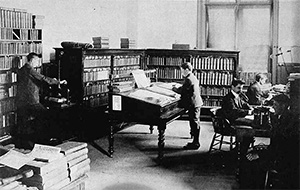 Reference Library & Librarian's Office, Port Adelaide Institute by City of PAE Libraries’local historical photos is licensed under
Reference Library & Librarian's Office, Port Adelaide Institute by City of PAE Libraries’local historical photos is licensed underCC BY 2.0
Before Library Instruction Evolved
Eighteen years before the birth of the American Library Association, Ralph Waldo Emerson indicated a need for a "professor of books" to help people access books sitting on the shelves.
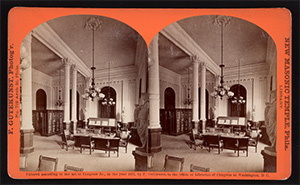 Gutekunst, Frederick, photographer. Library. Pennsylvania
Gutekunst, Frederick, photographer. Library. Pennsylvania Philadelphia, 1873. Photograph. https://www.loc.gov/item/2017652238/
Library Instruction Increased After the Civil War
In the 1860s, social changes and developing technology shaped education and its goals. These factors led to the rise and rapid decline of library instruction between 1870 and 1914.
The Birth of the ALA: Supports Library Instruction
With the establishment of the American Library Association in 1876, methods of instruction were changing to include reading courses, independent study, and research instead of lecture and textbook only. Librarianship became a profession in 1876 and over the next few decades libraries grew in size, scope, and service as library instruction would soon be established. Justin Winsor, the first president of the ALA, supported the belief that the librarian is an educator and is needed to bring the library and its uses to the students. http://www.ala.org
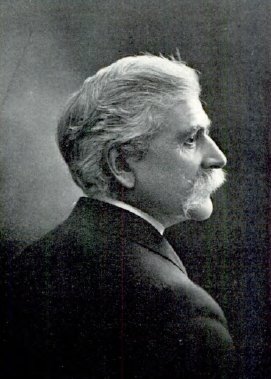 Raymond Cazallis Davis. Author Unknown. commons.wikimedia.org/wiki/File:Raymond_Cazallis_Davis.jpg
Raymond Cazallis Davis. Author Unknown. commons.wikimedia.org/wiki/File:Raymond_Cazallis_Davis.jpg
Professional Library Instruction
Raymond C. Davis, a librarian at the University of Michigan, began giving lectures on how to use the library. He centered on how to use the card catalog and reference materials. Another librarian at the University of Rochester, Otis Hall Robinson, gave lectures to freshmen and sophomores about how to use the library and its importance in supplementing their classes with information from the library. He pushed for librarians to apply "systematic instruction" because many institutions did not have set programs of instruction.
 Gutekunst, Frederick, photographer. Library. Pennsylvania
Gutekunst, Frederick, photographer. Library. Pennsylvania Philadelphia, 1873. Photograph. https://www.loc.gov/item/2017652238/
Library Instruction Declines
In the early 1900s, library instruction did not become widely accepted into the college curriculum. 6 of 17 institutions examined no longer gave library instruction by 1900 and two more schools discontinued library instruction by 1903.
 Reference Library & Librarian's Office, Port Adelaide Institute by City of PAE Libraries’local historical photos is licensed under
Reference Library & Librarian's Office, Port Adelaide Institute by City of PAE Libraries’local historical photos is licensed under CC BY 2.0
Library Instruction in the U.S.
In 1903, a committee from the ALA found that only 11 colleges provided library instruction.
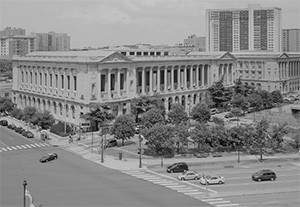 Historic American Buildings Survey, Creator, et al. Free Library of Philadelphia, Central Library,Vine Street, Philadelphia, Philadelphia County, PA. Documentation Compiled After. Photograph. Retrieved from the Library of Congress, www.loc.gov/item/pa4067/
Historic American Buildings Survey, Creator, et al. Free Library of Philadelphia, Central Library,Vine Street, Philadelphia, Philadelphia County, PA. Documentation Compiled After. Photograph. Retrieved from the Library of Congress, www.loc.gov/item/pa4067/
Library Instruction in the U.S.
In 1913, the Bureau of Education surveyed colleges and universities found that out of 446 responses, seven required credit bibliography courses for graduation and nineteen colleges offered elective classes
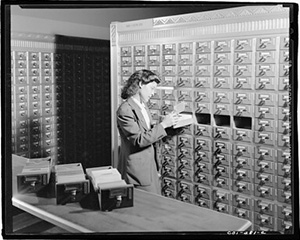 Washington, D.C. Jewal Mazique [i.e. Jewel] cataloging in the Library of Congress Collier, John, Jr., 1913-1992, photographer. http://loc.gov/pictures/resource/fsa.8d02860/
Washington, D.C. Jewal Mazique [i.e. Jewel] cataloging in the Library of Congress Collier, John, Jr., 1913-1992, photographer. http://loc.gov/pictures/resource/fsa.8d02860/
College Freshmen: Library Instruction Experience
In 1924, Raymond Walkley discussed the experience with library instruction from the University of Maine. The university created a program of library instruction during freshman orientation week consisting of three parts: a lecture, a tour of the library, and a hands-on-session where the students applied what they had learned to answer questions. It was felt that library instruction was needed because only 29% had any previous library instruction.
 University of Michigan Library Card Catalog by David Fullmer is licensed under CC BY 2.0
University of Michigan Library Card Catalog by David Fullmer is licensed under CC BY 2.0
World War II Innovations
The 1930s, like the 1920s, was a time where efforts were made to establish instruction programs. The need for library instruction is emphasized throughout the literature during this time period.
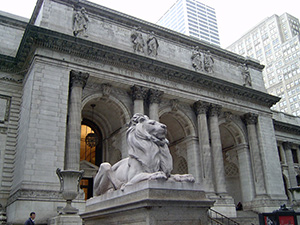 New York City Public Library front by Melanzine1013 is licensed under CC BY-SA 2.0
New York City Public Library front by Melanzine1013 is licensed under CC BY-SA 2.0
A Time of Problems for Library Instruction
After World War II, enrollment in colleges and universities rose largely and another push for higher education came in the late 1950s. Library instruction had a lot of activity, but did not progress. Many colleges had instruction programs but increasingly larger classes became overwhelming for librarians. Library instruction programs struggled due to the lack of a conceptual framework and some librarians did not accept library instruction as an important function of the library.
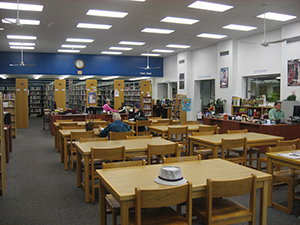 Massapequa, Central Avenue Library by sphoto33 is licensed
Massapequa, Central Avenue Library by sphoto33 is licensedunder CC BY 2.0
Library Instruction and the Grass Roots Movement
The 1960s began what is known as the grass roots movement. Librarians at numerous colleges and universities across the country planned library instruction programs with whatever materials they had at hand. Although bibliographic instruction was not new, librarians felt that instruction before the 1960s was routine or remedial. The literature of this time period shows an increase in the discussion of library instruction. The 1960s introduced technology and audiovisual materials. There was a growing experimentation in using overhead transparencies, tape recordings, slides, films, and even closed-circuit television to enhance the practice of library instruction.
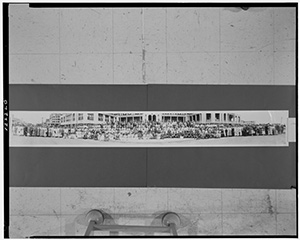 American Library Association, New Monterey Hotel, Asbury Park, N.J., June 25, 1919 LCCN2007661672 by Ashley Van Haeften is licensed under CC BY 2.0
American Library Association, New Monterey Hotel, Asbury Park, N.J., June 25, 1919 LCCN2007661672 by Ashley Van Haeften is licensed under CC BY 2.0
ALA Forms Committee on Library Instruction
Library instruction was becoming more accepted in the library profession. In 1967, ALA formed the Committee on Instruction in Library Use.
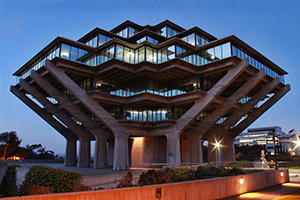 Night View of The Geisel Library, University of California San Diego by O Palsson is licensed under CC BY 2.0
Night View of The Geisel Library, University of California San Diego by O Palsson is licensed under CC BY 2.0
Library Instruction Gains Momentum
The 1970s brings expansion to library instruction and it becomes an important part of academic librarianship. The continued growth of the grass roots movement in library instruction may be contributed to several factors. 1) Changes in higher education and larger library collections emphasized a book-centered educational philosophy. 2) More computer applications were developed which affected libraries. 3) More books and articles were written about instruction. 4) Government agencies and foundation gave grants to support library programs. 5) Support for instruction came from professional library organizations in the form of standards, conferences, workshops, and publications.
 Closing panel at ACRL-NW in Menucha, OR by oenglish is licensed under CC BY 2.0
Closing panel at ACRL-NW in Menucha, OR by oenglish is licensed under CC BY 2.0
Library Instruction Obtains Published Guidelines
In 1977, the ACRL published guidelines for instruction and ALA created the Library Instruction Round Table. These organizations provided a needed support network for library instruction.
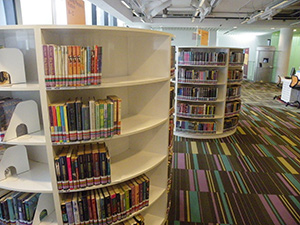 Bishan Library, Singapore by Ellen Forsyth is licensed
Bishan Library, Singapore by Ellen Forsyth is licensed under CC BY-SA 2.0
Library Instruction's Second Generation
The 1980s emerged as the second generation of library instruction. Previously, library instruction was unorganized, but now it has grown into a recognized area of public service in academic libraries with an area containing its own literature, theory, content, and concerns.
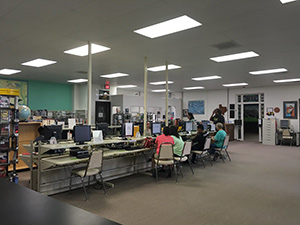 Cuero Public Library Computer Lab by Texas State Library and Archives Commission is licensed under CC BY 2.0
Cuero Public Library Computer Lab by Texas State Library and Archives Commission is licensed under CC BY 2.0
Library Instruction and the New Information Age
Technology had a powerful influence on library instruction during the 1990s. The growth and popularity of online catalogs, online databases such Dialog, EPIC, and BRS, CD-ROMs, and the Internet changed what was taught in library instruction sessions. Students need to know about searching strategies and database selection in addition to traditional topics.
 Closing panel at ACRL-NW in Menucha, OR by oenglish is licensed under CC BY 2.0
Closing panel at ACRL-NW in Menucha, OR by oenglish is licensed under CC BY 2.0
2002 ALA Standards
 Massapequa, Central Avenue Library by sphoto33 is licensed
Massapequa, Central Avenue Library by sphoto33 is licensedunder CC BY 2.0
The Future of Library Instruction
It is too early to see the effects of library instruction with the rapid advances of new technology streaming into the modern era. It is sure to present challenges as new technologies become dated as quickly as they become part of the market. Time will tell if library instruction will flourish into the new century.
 Night View of The Geisel Library, University of California San Diego by O Palsson is licensed under CC BY 2.0
Night View of The Geisel Library, University of California San Diego by O Palsson is licensed under CC BY 2.0
Leveraging the Liaison Model
 New York City Public Library front by Melanzine1013 is licensed under CC BY-SA 2.0
New York City Public Library front by Melanzine1013 is licensed under CC BY-SA 2.0


